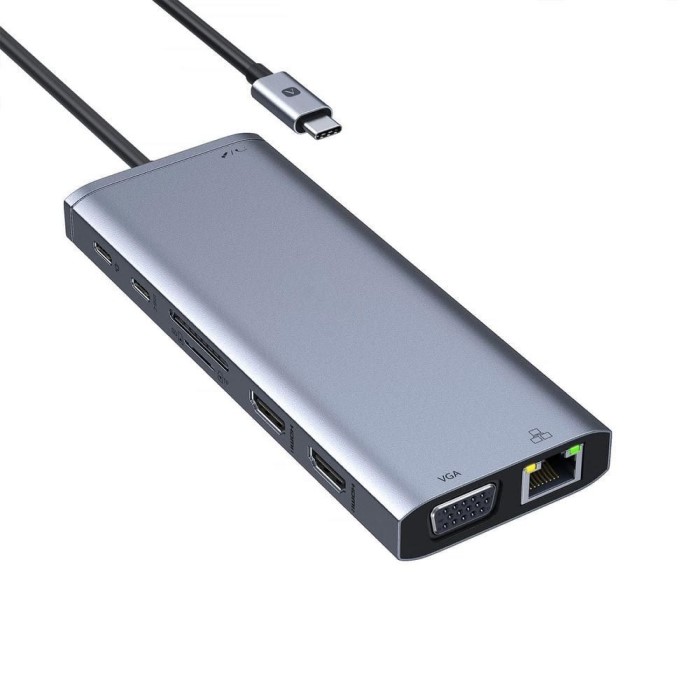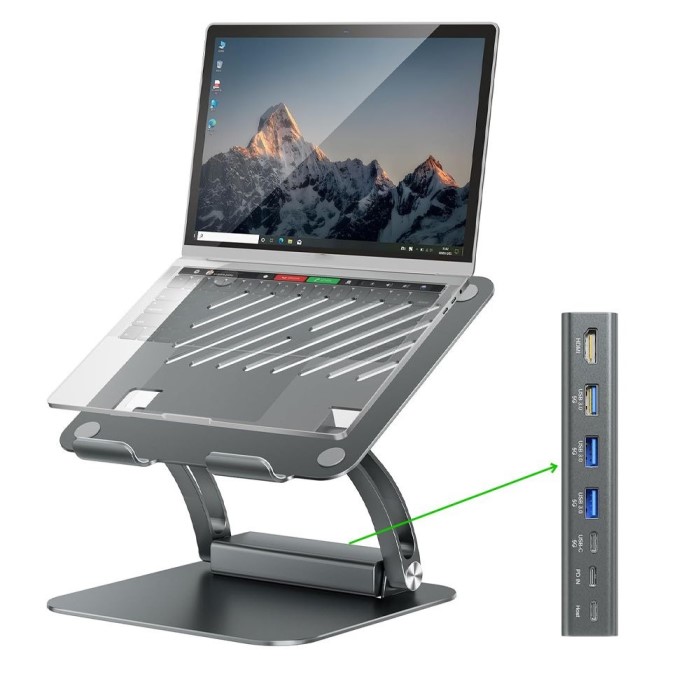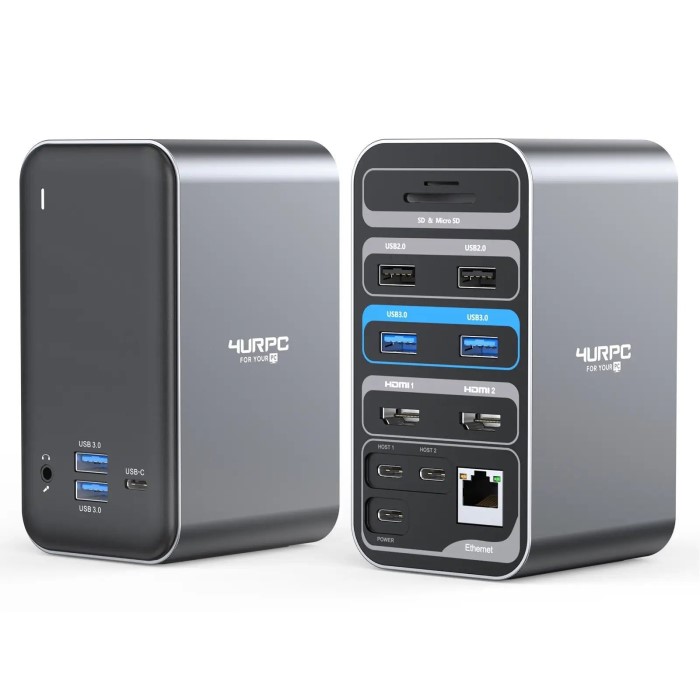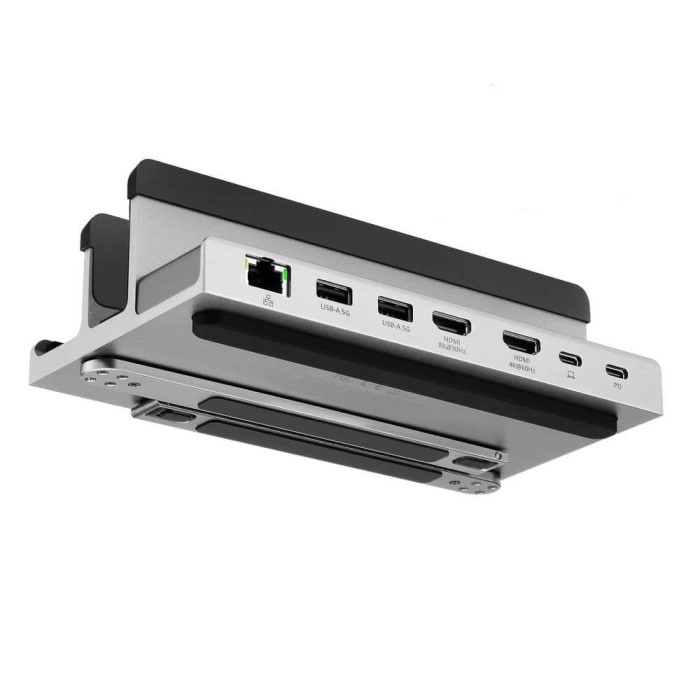Introduction: The Growing Importance of Docking Stations
As the modern workforce adapts to flexible working environments, the docking station has become an essential laptop accessory. In 2025, maximizing productivity and enhancing connectivity is paramount, whether working from home or in an office setting. A docking station laptop serves as a vital hub that simplifies the connection between a laptop and peripherals such as monitors, keyboards, and external drives. This article will explore the latest docking station solutions, their core features, and how they can elevate your workspace.

What is a Docking Station and Its Benefits?
A docking station is a hardware device that allows a laptop to connect to multiple peripherals through a single interface. By connecting your laptop to a docking station, you can easily access a variety of devices such as monitors, printers, and additional USB ports. This integration is especially useful for remote workers or those who travel frequently with their laptops.
Benefits of Using a Docking Station
Improved Connectivity
- Variety of Ports: Docking stations are designed with multiple ports, such as HDMI, USB-C, USB-A, and Ethernet. This diversity allows users to connect an array of peripherals, including monitors, external hard drives, mice, and keyboards.
- Eliminating Cable Clutter: Without a docking station, users often face the inconvenience of continuously plugging and unplugging various cables to connect different devices. A docking station simplifies this process by consolidating connections into one hub.
- Seamless Integration: The ability to connect multiple devices simultaneously means users can maintain a streamlined and organized workspace. It eliminates the frustration of dealing with various adapters and ensures that everything is ready for use.
Multi-Monitor Support
- Expanding Desktop Real Estate: Docking stations frequently support multi-monitor configurations, enabling users to connect two or more external displays. This capability is particularly beneficial for professionals who require extensive digital workspace for multitasking.
- Enhanced Multitasking: With multiple screens, users can view different applications or documents side by side. This setup reduces the time spent switching between tabs or windows, significantly improving workflow efficiency.
- Better Collaboration: Multi-monitor setups also facilitate collaboration in team environments. Users can share content easily during meetings or presentations without the hassle of switching inputs on displays, making teamwork more effective.
Ergonomic Setup
- Optimal Viewing Height: A docking station allows users to raise their laptops to eye level, which is crucial for reducing strain on the neck and back. By aligning the screen with the user’s line of sight, it helps maintain proper posture.
- Reduction of Eye Strain: Using a docking station promotes a more comfortable viewing experience. By positioning the laptop screen at an appropriate height and distance, users can minimize eye strain caused by looking down at a low screen for extended periods.
- Encouraging Comfort: Creating a comfortable workspace not only enhances physical well-being but also promotes productivity. Users are more likely to stay focused and productive in an ergonomic setup, as it reduces discomfort during prolonged use.
Simplified Workflow
- Desktop Replacement: Docking stations effectively turn laptops into desktop replacements. With all necessary peripherals connected, users can enjoy the benefits of a desktop environment while still using the portability of a laptop.
- Ready-to-Go Workstation: Once the docking station is connected, all peripherals become instantly accessible. Users can set up their workspace with a keyboard, mouse, and monitor, allowing for immediate use whenever they sit down to work.
- One-Cable Connection: The most significant advantage of a docking station is the simplicity of connecting with a single cable. Instead of fumbling with multiple cables, plugging in one cable provides instant access to everything, streamlining the user experience and saving time.
Key Features to Consider When Choosing a Docking Station for Your Laptop
When selecting a docking station, several features can significantly impact its performance and your overall experience. Understanding these key elements is crucial for finding the right model suited to your needs.
1. Port Availability
Look for a docking station with a comprehensive array of ports. The most common ports include HDMI, DisplayPort, USB-C, USB-A, Ethernet, and audio outputs. A wide variety of ports ensures that you can connect all your essential peripherals without needing additional adapters.
2. Power Delivery
Power delivery (PD) is an important feature that allows a docking station to charge your laptop while connected. This means you can power your laptop and connect other devices simultaneously. Make sure to check the wattage output to ensure it supports your laptop’s power needs.
3. Compatibility
Not all docking stations are compatible with every laptop model. Check to ensure that the docking station supports your laptop’s operating system and connection type. USB-C docks tend to be more universal, but verifying compatibility is crucial.
4. Build Quality and Design
The build quality of a docking station is significant, especially if it will be used frequently or transported. Look for a robust design that can withstand daily wear and tear. Additionally, consider the size and aesthetics of the docking station to match your workspace.
5. Software and Driver Support
Some docking stations require software or drivers to function optimally. It’s essential to review user feedback regarding the setup process and compatibility with various operating systems to avoid potential issues.
The Best Docking Station Laptop Solutions for 2025
With the continued evolution of technology, several docking stations stand out for their performance, features, and user satisfaction in 2025. Below are some of the top options to consider:
1. Dell WD19TB Thunderbolt Dock
Dell’s WD19TB is a top choice for users who need robust connectivity options. It offers Thunderbolt 3 support, dual 4K display capability, and various ports, including USB-A, USB-C, and HDMI. It provides solid performance and easy compatibility with various Dell laptop models.
2. CalDigit TS3 Plus
The CalDigit TS3 Plus is known for its high-quality build and extensive port selection. With 15 ports, including USB-C, DisplayPort, and audio in/out, it can create a comprehensive workspace setup. Its elegant design makes it an attractive addition to any desk.
3. Plugable USB-C Triple Display Docking Station
This versatile docking station allows users to connect three monitors simultaneously, making it ideal for professionals needing extensive screen real estate. It features USB-C and USB-A ports and provides power delivery, making it a great choice for productivity.
4. Anker PowerExpand Elite 13-in-1 Thunderbolt 3 Dock
Anker’s docking station offers a wide range of connectivity options along with high-speed data transfer. It balances performance and cost-effectiveness, allowing users to connect essential peripherals while charging their laptops.
5. Lenovo ThinkPad USB-C Dock Gen 2
Broad Compatibility
- Designed for Lenovo Laptops: The Lenovo ThinkPad USB-C Dock Gen 2 is specifically engineered to work seamlessly with various models in the Lenovo ThinkPad series. This specialized compatibility ensures that users can easily connect their devices without worrying about compatibility issues.
- Universal Compatibility: While optimized for ThinkPad laptops, the dock also supports a variety of USB-C enabled laptops from other brands. This versatility makes it a valuable option for users who might switch devices or work in multi-brand environments.
Multiple Ports for Enhanced Connectivity
- Comprehensive Port Selection: The dock features an extensive array of ports, including USB-A, USB-C, HDMI, DisplayPort, and Ethernet. This comprehensive selection allows users to connect multiple devices and peripherals simultaneously.
- Multi-Monitor Support: With support for dual 4K displays via HDMI and DisplayPort, the dock enables users to set up a multi-monitor workspace. This capability enhances productivity by allowing for easier multitasking and improved workflow management.
- Convenience for Peripherals: The inclusion of several USB ports ensures that users can connect essential peripherals such as a keyboard, mouse, and external storage devices without needing additional adapters or hubs.
Reliability and Performance
- Solid Build Quality: The Lenovo ThinkPad USB-C Dock Gen 2 is constructed with high-quality materials designed to provide long-lasting durability. This robust build is essential for users who require a reliable docking solution in various environments.
- Consistent Performance: Users can expect stable connectivity and performance from this dock. Whether in a busy office or a home setup, the dock delivers consistent power and data transfer rates, making it a dependable choice for daily use.
- Efficient Power Delivery: The dock can provide power to connected laptops through its USB-C port. This feature means users can charge their devices while using them, eliminating the need for an additional power adapter and keeping their workspace clutter-free.
Popular Choice in Diverse Work Environments
- Versatile Use Cases: The Lenovo ThinkPad USB-C Dock Gen 2 is favored by professionals across various fields, from corporate environments to creative industries. Its adaptability makes it suitable for anyone looking to enhance their workstation.
- Support for Remote Work: As remote working continues to be a popular trend, this dock caters to the needs of those who set up home offices. It allows for easy transitions between home and office setups, providing a reliable solution for hybrid work models.
- User-Friendly Design: Its user-friendly design allows for straightforward setup and an intuitive user experience. Users can easily connect and disconnect their laptops without fuss, making it a practical accessory for daily use.
FAQ Section
What does a docking station do for a laptop?
A docking station acts as a hub that connects a laptop to various peripherals through a single interface. It simplifies access to devices like monitors, keyboards, and printers, enhancing productivity and improving workflow.
Can a docking station work with any laptop?
Not all docking stations are universally compatible. It’s essential to check if a docking station supports your laptop’s connection type and operating system. USB-C docking stations are generally more adaptable across models.
What are the disadvantages of a docking station?
Some disadvantages include limited portability, as some docking stations can be bulky. Additionally, initial setup may require additional drivers, and specific models may not support all laptop features.
What is the best docking station for a laptop?
The best docking station depends on individual needs and compatibility. Models like the Dell WD19TB and CalDigit TS3 Plus are highly rated for their versatility and extensive port options.
Conclusion: Choosing Your Ideal Docking Station Laptop Solution
Selecting the right docking station laptop solution can significantly enhance your workspace, whether you’re working from home or in an office. By considering key features such as port availability, power delivery, compatibility, and build quality, you can ensure that you find a docking station that meets your unique requirements in 2025. With options like the Dell WD19TB and CalDigit TS3 Plus leading the market, optimizing your connectivity has never been easier.
In conclusion, leveraging the power of a docking station can transform your productivity, streamline your connections, and provide a more organized working environment. Make the switch today and elevate your computing experience!



